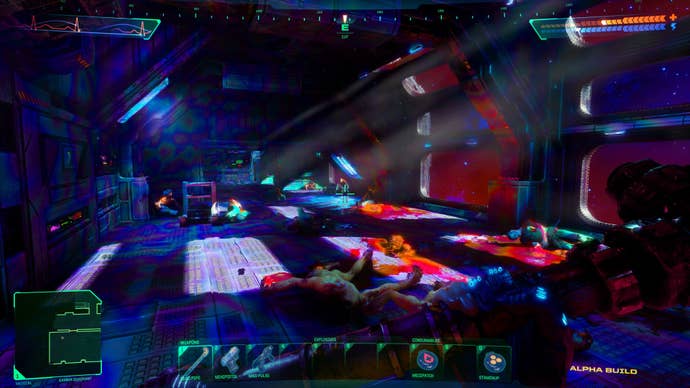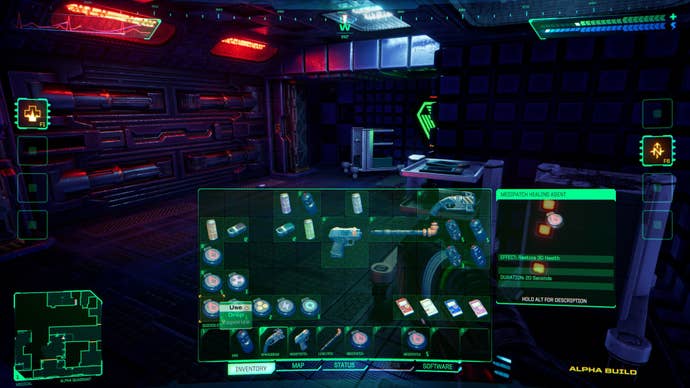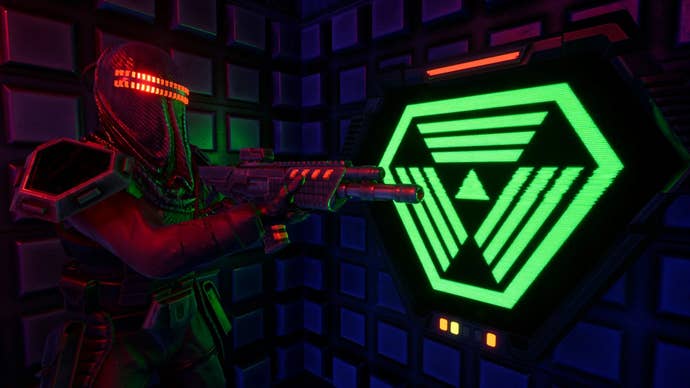System Shock Remake review | VG247
[ad_1]
It’s hard to imagine a more daunting proposition for a remake than the original. system crash. It’s arguably the game that actually launched the biggest immersive sim boom in history, a genre whose fans are notoriously picky, even though they’ve never been able to come up with a universally accepted definition of what an “immersive sim” is. .
It’s a genre of such a specific time and place, games that possess intrinsic vibes from thick, chunky keyboards, bulky cardboard boxes, and 640×480 CRT screens. How do you channel that into an age of ultra-wide monitors and digital-only gaming? Someone wants it? Warren Spector himself, one of the key creative figures in the heyday of PC gaming about rummaging through shelves and reading emails, couldn’t pull off a tumultuous System Shock 3 https://www.vg247.com/system-shock -3 – tencent before the whole effort imploded.
This isn’t developer Nightdive Studios’ first dispute with the license: after acquiring the IP in 2015, they released System Shock: Enhanced Edition, a slightly improved version of the original optimized for modern systems. At the same time, development began on what was intended to be a new version from scratch. Here we are, seven full years of intermittent development, engine changes, general direction changes, and scope increases later, and it should be considered a miracle that the game even even released. Never mind the fact that it’s an absolutely innovative work of visual design that elevates the original in every possible way without losing anything in the process.
This System Shock is both a reboot and a remake, following the same beats but with enough additions and variations to keep veterans on their toes. You are an anonymous hacker, brought by a shady executive to Citadel Station, a corporate haven in orbit on Jupiter. He offers you your freedom and a delicious neural implant in exchange for your help in removing the ethical security measures of the station’s managerial artificial intelligence: SHODAN.
You’ve apparently never seen a single sci-fi movie, so you’re quick to take him up on his offer. You wake up six months later and everyone has been turned into a mutant slime by a now omniscient SHODAN with delusions of godhood, who plans to fire a gigantic laser beam at Earth and turn the survivors into a new breed of biomechanical terrors to worship her and extend their glow through the stars.

Now you’re trapped in a multi-level, maze-like megastructure of twisting tunnels, broken doors, and crooked elevators, populated by murderous cyborgs, mutant hybrids, and homicidal cleaning robots. SHODAN watches you from hundreds of security cameras throughout the station, taunts you and your helplessness from screens, and unleashes enemies from hidden compartments while your back is turned. Obviously, you are humanity’s only hope and you have a piece of pipe.
From there, you are more or less on your own. Any concerns that this new version would make things easier are quickly dismissed. There is no objective marker yet. Hell, there’s still no explicit target anywhere. You’re still going to need an honest pen and paper for the various codes and clues that won’t add to a record. It’s a matter of making your way room by room, completing your auto map, scavenging for whatever resources and weapons you can while trying to figure out what all these blinking lights, levers and switches are doing. The core loop, once you get into the groove, is still surprisingly relaxed; the satisfaction of disabling cameras and turning once daunting and unfamiliar floors into familiar territory. The illicit thrill of picking up all the trash and recycling it.
Mechanically, everything that made the original System Shock what it was is still here. While the controls are now closer to a traditional first-person shooter, this is still a game about managing inventory. About considering the most cost-effective and safest way to clear a room of hostiles. You’ll spend most of your time piecing together a way to save the day by collecting bits of audio logs and emails scattered among the corpses, following the leads to various terminals and station systems.

While everything from the level designs to the general ebb and flow is largely identical to the original, the aesthetics are where Nightdive makes its biggest and bravest changes. Instead of a realism-based visual design, in the standard ugly gloss of most Unreal Engine remakes, here Nightdive has gone for something much more interesting.
The large, colorful pixels that make up System Shock’s weapons and environments seamlessly and effortlessly evoke the atmosphere of the original, while allowing plenty of room for expansion and interpretation. It’s not exactly the look of modern boomer shooters, but it definitely channels the look of low-res late ’90s PC gaming more than contemporary fidelity. These rooms and hallways, while filled with much more detail, still retain an intuitive readability.
Weapons are where the upgrades are most obvious. In the original, most firearms occupy a small strip in the bottom center of the screen. You are lucky to see something beyond the canyon. Here, each instrument of death you pick up is lovingly delivered into your hands when you first pick them up. They’re thick and colorful and every action taken with them produces big meaty clicks and buzzes. They look and feel like something someone made out of cardboard and LEDs for a Halloween party. The reloading animations are tactile and overdone in the best way, showcasing the kind of over-the-top physicality of those videos The guy recharging toasters and other appliances. Weapons spew steam from access ports, arcs of electricity ripple across them, and cheap plastic ammunition screens are covered in scratches and finger smudges.

It would be easy to dismiss all of this as superfluous window dressing, but it all reinforces the world-building. Weapons range from industrial tools to makeshift laser beams and mass-produced security firearms. They all fit together in this strangely colorful horror game, set in the distant future but filled with strangely anachronistic technology like USB sticks and LCD screens. You basically have a Nintendo Power glove strapped to your arm. It’s a world of faux low-tech ’80s cyberpunk, a prevalent affectation in pop culture that can often come across as garish or lazy, but here it’s perfectly executed. It makes sense.
As a new version, it improves everything that could frustrate modern gamers without detracting from the experience, simplifying controls and inventory management to a contemporary standard while retaining all the functionality and atmosphere. As a reboot, it’s an impressively secure base for a new generation of immersive sims.
With System Shock, Nightdive have created not only the ultimate way to experience one of the most pivotal works of an incredibly specific and daunting genre, but have also created the ultimate entry point for gamers who want to get into games about crawling through of vents and collecting cards. but aren’t sure where to start. Spiritual successors like 2017’s Prey or Void Bastards may have done an excellent job of carrying the torch, but it’s a real treat to go back to where it all began.
advantages
- Perfectly reimagined for modern gamers.
- Simplified and standardized without consuming the unique heritage of System Shock
cons
- Minor bugs causing corpses to bounce every time you reload a save game, not ideal for a horror game.
- No major environmental or narrative surprises for veterans
Tested version: PERSONAL COMPUTER. The publisher provided copies of the game..
Manage cookie settings
[ad_2]
